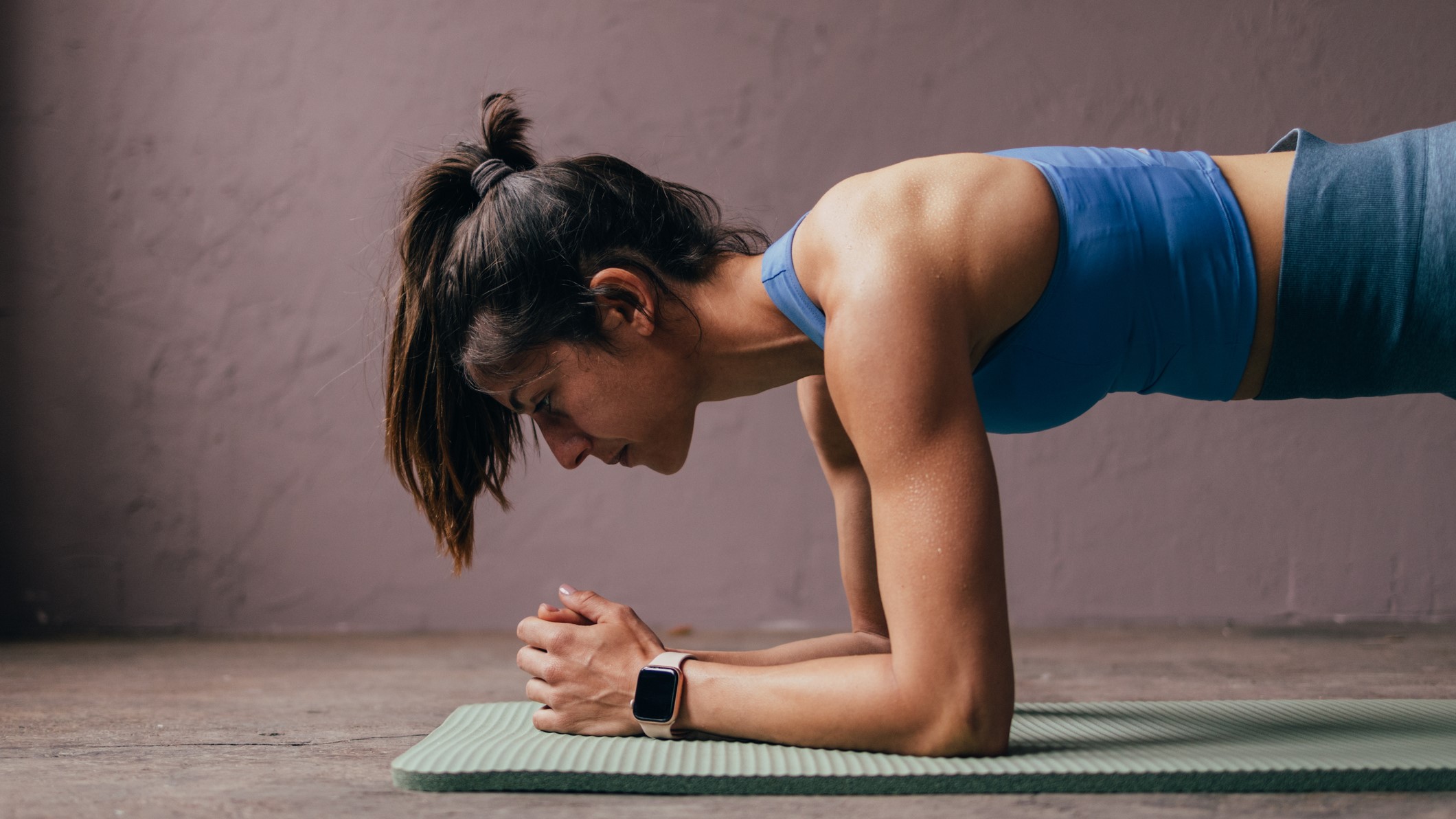
When it comes to fitness routines, the plank twist stands out as a versatile option that can complement just about any workout.
As a variation on the classic plank, this dynamic isometric exercise not only challenges your core muscles but also offers adaptability, making it suitable for individuals of varying fitness levels or without access to equipment. So whether you're a dedicated fitness enthusiast or just a beginner, the plank twist has something to offer everyone. Take a look at the best plank variations to add to your routine here.
But what’s the proper way of performing a plank twist, and what are the real benefits of adding this exercise to your workout routine in the long term? Tom’s Guide has spoken to a number of fitness experts to find out. Let’s dive in.
Plank twist: What are the benefits?
The plank twist has been — and still is — a popular choice among fitness enthusiasts. But for what reason? For one, it can benefit the body in more ways than one.
The main focus for plank twists, according to Lee Mitchell — PT and UK Fitness Ambassador at Renpho - is the core muscles. This includes the rectus abdominis (the long flat muscle that extends along the length of the front of the abdomen), the obliques (the waist muscles connecting the ribs, top of the hip bone, fascia of the abdominals and lower back) and, finally, the transverse abdominis (the deeper muscles under the abs that extend between the ribs and the pelvis).
“It’s the twist element [of the exercise] that engages the oblique muscles more intensely, helping to improve rotational stability and overall core strength,” he says.
While the twisting motion involved in a plank twist works your obliques, it also challenges the muscles in your abdominals, quadriceps, glutes, and shoulders as they support you during the movement.
Get instant access to breaking news, the hottest reviews, great deals and helpful tips.
“This contributes to a more well-rounded upper body workout,” Michell adds. “Incorporating plank twists into your fitness routine will help enhance core stability, improve posture, and contribute to functional strength.”
How to perform a plank twist
While executing a plank twist is pretty straightforward, it requires proper form to ensure you’re not only getting the most out of the exercise but that it’s done safely, avoiding injury.
Tom’s Guide spoke to Jodie McKnight, Trainer at F45 Mill Hill, to find out exactly how a plank twist should be performed with the right form. Below are her step-by-step instructions:

- Step 1 - Start in a plank position with your elbows on the mat. Make sure you’re on your toes with your stomach raised off the mat and that your back is straight.
- Step 2 - Your shoulders, hips, knees and ankles should all be in a straight line, and your shoulders should be directly above your elbows.
- Step 3 - Engage your abdominals by drawing your belly button pulled in towards your spine, and slowly twist at your hips until your right hip is almost touching the floor.
- Step 4 - Pause for a second and then return to the plank position.
- Step 5 - Repeat alternating sides for the desired amount of time or number of repetitions
So, what’s the right number of reps to perform per session for optimal results? Well, this can be based on several factors, including your fitness level, goals, and the intensity of your workout. As a general guideline, try starting with a manageable number of repetitions and gradually increase as your strength and endurance improve.
A common approach is to perform 3 to 4 sets of 10 to 15 repetitions per side for each set, which would result in a total of 20 to 30 twists per set. However, it's important to listen to your body and avoid overtraining. If you're a beginner, for example, start with a lower number of repetitions and sets and build them up over time.
Plank twist: Form mistakes to look out for
Plank twists, along with general plank exercises might seem easy, but if your form is off, you could be causing more harm than good.
“One mistake you could easily make might include letting your abdominals sink towards the floor,” explains McKnight. “It’s important to ensure that you’re keeping your core engaged at all times during the exercise to avoid putting pressure on your lower back.”
Other common mistakes McKnight highlights include dropping or arching your back. “The purpose of this exercise is to strengthen your core, but if your core is not strong enough to start with it can cause you to arch or drop your back in order to support the pressure,” she adds. “To avoid this, make sure your body is straight and your spine is neutral.
“With plank twists, people also move their elbows and toes too much due to the increased movement. It’s important to make sure you are anchored to the floor to provide a bigger twist through the hips, which will ensure your obliques are getting all the benefit!”
Plank twist: Different variations to try
The great thing about the plank twist is how versatile it is. You can tweak it to match your fitness level and even adjust based on the equipment you've got access to.
Aroosha Nekonam, a personal trainer at PT at global PT gym Ultimate Performance lists three variations of the plank twist, ranging from easier to more challenging, including how to perform them and what the benefits are.
Easier variation: Side plank hip dips
How to do it: Start in a side plank position on your forearm, with your hips lifted and your body forming a straight line. Lower your hips toward the ground and then raise them back up, engaging your obliques. Repeat on both sides.
Benefits: This variation works on lateral core strength and stability.
Harder variation: Plank with reach-through
How to do it: Begin in a high plank position (push-up position). Lift one hand off the ground and reach it under your body, twisting your torso. Return to the starting position and repeat on the other side.
Benefits: This advanced version adds an extra challenge by incorporating a reach-through motion, further engaging the core and obliques.
More challenging variation: Plank to side plank
How to do it: Start in a high plank position. Rotate your body to one side, stacking one foot on top of the other and lifting your arm toward the ceiling, forming a side plank. Return to the high plank position and switch to the other side.
Benefits: This variation combines the standard plank with a side plank, intensifying the workout for the core, shoulders and obliques.
If those variations still don’t leave you gasping for breath, Mitchell details an even more challenging alternative to the plank twist, the Spiderman plank twist.
To do this, start in a high plank position and, as you twist, bring your knee towards your elbow on the same side of your body. “This variation adds an element of hip mobility and works the obliques and hip flexors more intensely,” he explains.
“However, while incorporating variations can provide progressive challenges and target different aspects of core strength, stability, and flexibility, always choose the variation that aligns with your fitness level and then progress, gradually, as your strength improves.”
More from Tom's Guide
- 19 best plank variations to build core strength and muscle
- I did 50 Spiderman planks every day for a week — here’s what happened
- I did 50 hip dips a day for a week — here’s the results

Lee Bell is a freelance journalist and copywriter specialising in technology, health and fitness and how the latest innovations are shaking up the lifestyle space. From national newspapers to specialist-interest magazines and digital titles, Lee has written for some of the world’s most respected publications during his 12-plus years as a journalist.
